Explore the transformative clinical trials that have solidified the role of SGLT2 inhibitors in heart failure management and their potential to redefine the treatment landscape.
Introduction
Heart failure is a complex clinical syndrome associated with significant morbidity and mortality. In recent years, sodium-glucose cotransporter-2 (SGLT2) inhibitors have emerged as a promising new class of drugs with the potential to revolutionize heart failure management. Originally developed for type 2 diabetes treatment, SGLT2 inhibitors have demonstrated significant benefits in heart failure patients. In this comprehensive article, we will review the landmark clinical trials that have shaped the understanding and use of SGLT2 inhibitors in heart failure management.
1. Empagliflozin, Cardiovascular Outcomes, and Mortality in Type 2 Diabetes (EMPA-REG OUTCOME) (2015)
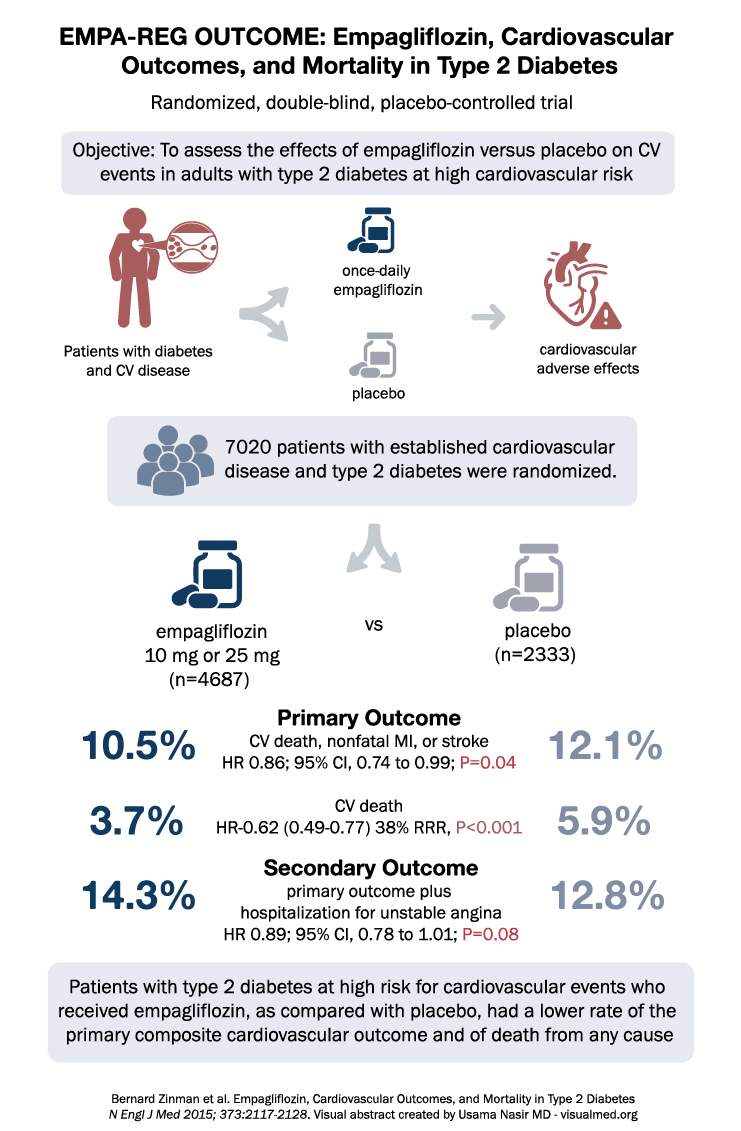
The EMPA-REG OUTCOME trial was a randomized, double-blind, placebo-controlled trial designed to evaluate the effect of empagliflozin, an SGLT2 inhibitor, on cardiovascular outcomes in patients with type 2 diabetes and established cardiovascular disease. The primary outcome was a composite of major adverse cardiovascular events, including cardiovascular death, non-fatal myocardial infarction, and non-fatal stroke.
Results from the EMPA-REG OUTCOME trial revealed that empagliflozin significantly reduced the primary composite outcome and the risk of hospitalization for heart failure compared to the placebo. This groundbreaking trial was the first to highlight the potential of SGLT2 inhibitors for heart failure management, even in patients without a prior history of heart failure.
2. Canagliflozin and Cardiovascular and Renal Events in Type 2 Diabetes (CANVAS) (2017)
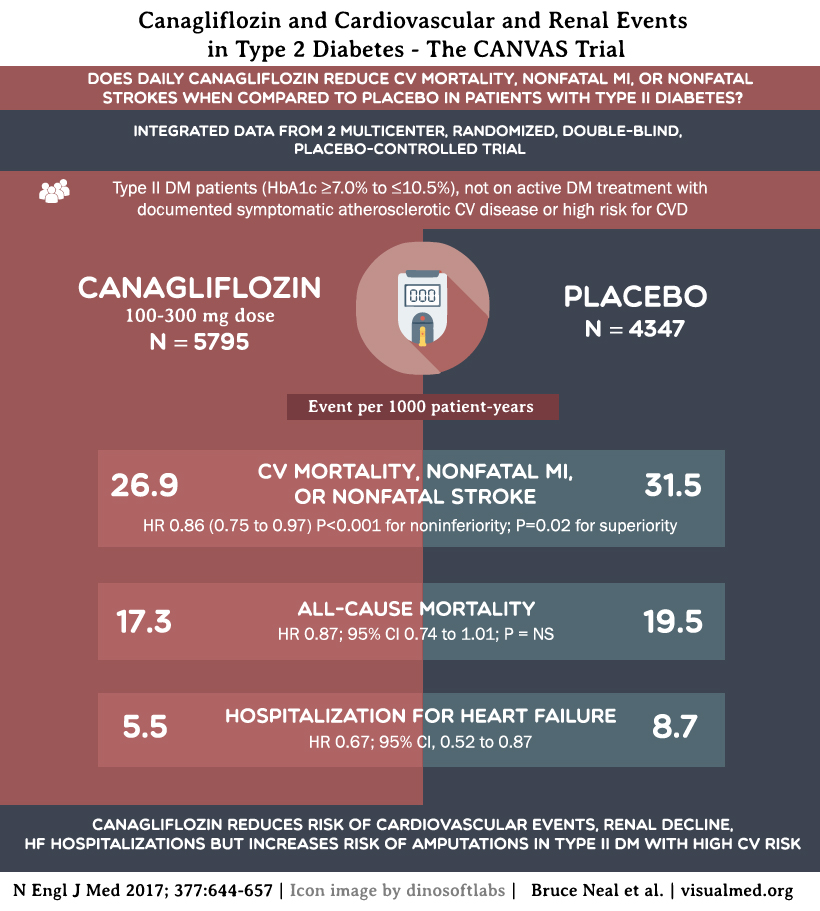
The CANVAS trial aimed to assess the efficacy of canagliflozin, another SGLT2 inhibitor, in reducing cardiovascular events and renal outcomes in patients with type 2 diabetes and a history of or risk factors for cardiovascular disease. The primary outcome was a composite of major adverse cardiovascular events.
The CANVAS trial demonstrated that canagliflozin reduced the primary composite outcome and hospitalization for heart failure compared to placebo. This study further strengthened the evidence supporting the use of SGLT2 inhibitors in heart failure management.
3. Dapagliflozin and Prevention of Adverse Outcomes in Heart Failure (DAPA-HF) (2019)
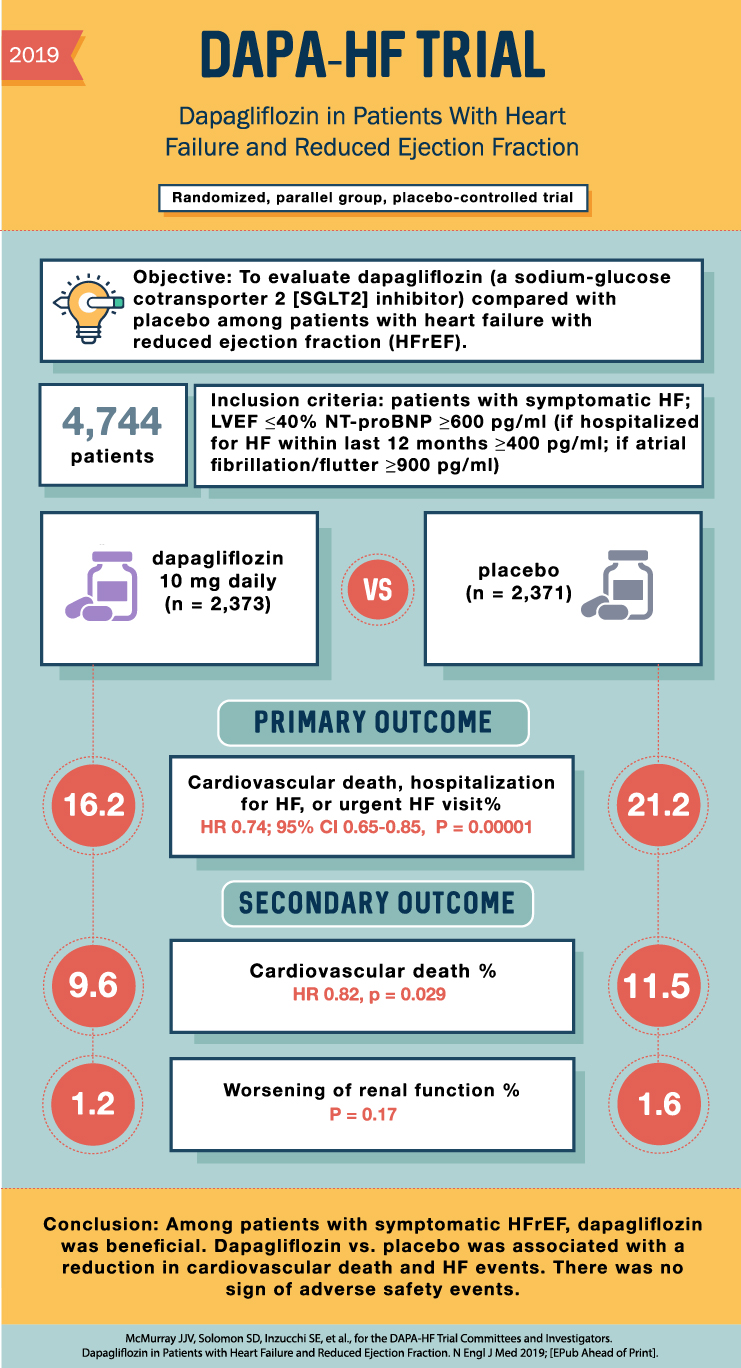
The DAPA-HF trial was a multicenter, double-blind, randomized, placebo-controlled trial evaluating the efficacy of dapagliflozin, an SGLT2 inhibitor, in patients with heart failure and reduced ejection fraction (HFrEF), regardless of their diabetes status. The primary outcome was a composite of worsening heart failure or cardiovascular death.
The results of the DAPA-HF trial showed that dapagliflozin significantly reduced the primary composite outcome in HFrEF patients, irrespective of their diabetes status. This pivotal trial expanded the potential use of SGLT2 inhibitors to include heart failure patients without type 2 diabetes, broadening their therapeutic impact.
4. Empagliflozin Outcome Trial in Patients With Chronic Heart Failure With Preserved Ejection Fraction (EMPEROR-Preserved) (2021)
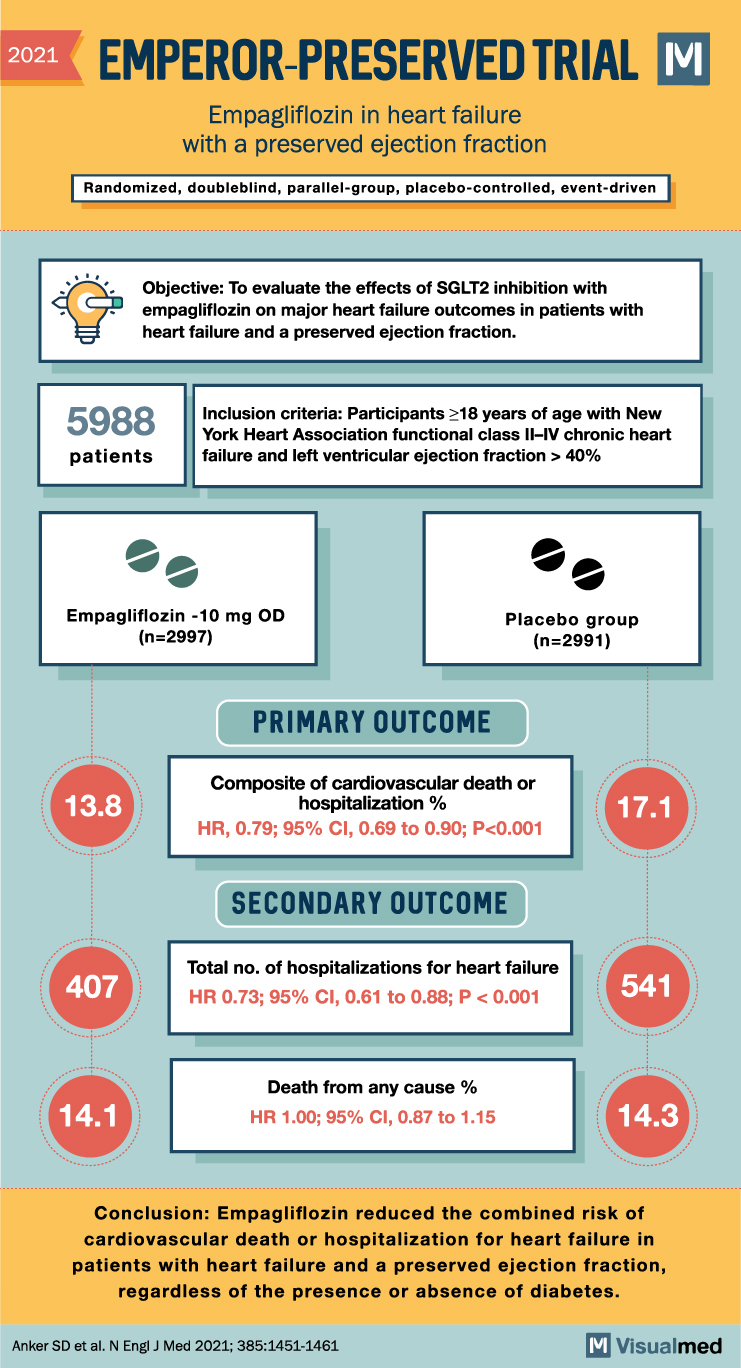
The EMPEROR-Preserved trial aimed to assess the efficacy of empagliflozin in patients with heart failure and preserved ejection fraction (HFpEF), regardless of diabetes status. The primary outcome was a composite of cardiovascular death or hospitalization for heart failure.
The EMPEROR-Preserved trial demonstrated that empagliflozin significantly reduced the primary composite outcome in HFpEF patients, independent of their diabetes status. This landmark trial marked a significant advancement in heart failure management, as it was the first to show a clear benefit of SGLT2 inhibitors in patients with preserved ejection fraction.
5. Dapagliflozin in Patients with Heart Failure and Reduced Ejection Fraction (DELIVER) (2021)
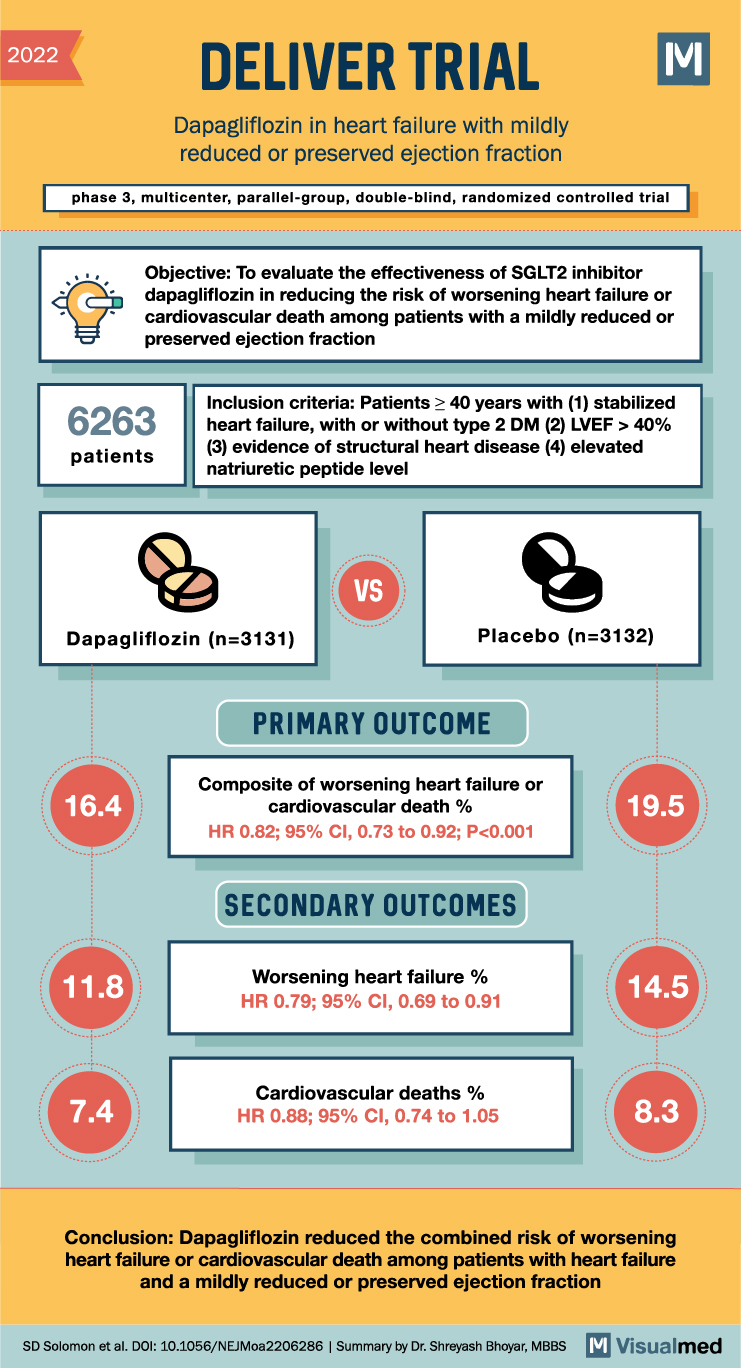
The DELIVER trial was designed to evaluate the efficacy and safety of dapagliflozin in patients with heart failure and preserved ejection fraction (HFpEF), irrespective of their diabetes status. The primary outcome was a composite of cardiovascular death or hospitalization for heart failure.
Results from the DELIVER trial showed that dapagliflozin reduced the primary composite outcome in patients with HFpEF. This study further confirmed the benefits of SGLT2 inhibitors in heart failure patients with preserved ejection fraction, adding to the growing body of evidence supporting their use in this population.
6. Efficacy and Safety of Canagliflozin in Participants With Heart Failure and Preserved Ejection Fraction (CHIEF-HF) (2021)
The CHIEF-HF trial was conducted to evaluate the effects of canagliflozin on health status, functional capacity, and clinical outcomes in patients with heart failure and preserved ejection fraction (HFpEF), regardless of their diabetes status. The primary outcome was the change in Kansas City Cardiomyopathy Questionnaire (KCCQ) total symptom score from baseline to 12 weeks.
The CHIEF-HF trial demonstrated that canagliflozin improved health status, functional capacity, and clinical outcomes in patients with HFpEF. This study further reinforced the role of SGLT2 inhibitors in the management of patients with preserved ejection fraction heart failure.
7. EMPEROR-Reduced: A Pivotal Trial Evaluating Empagliflozin’s Impact on Heart Failure with Reduced Ejection Fraction (2021)
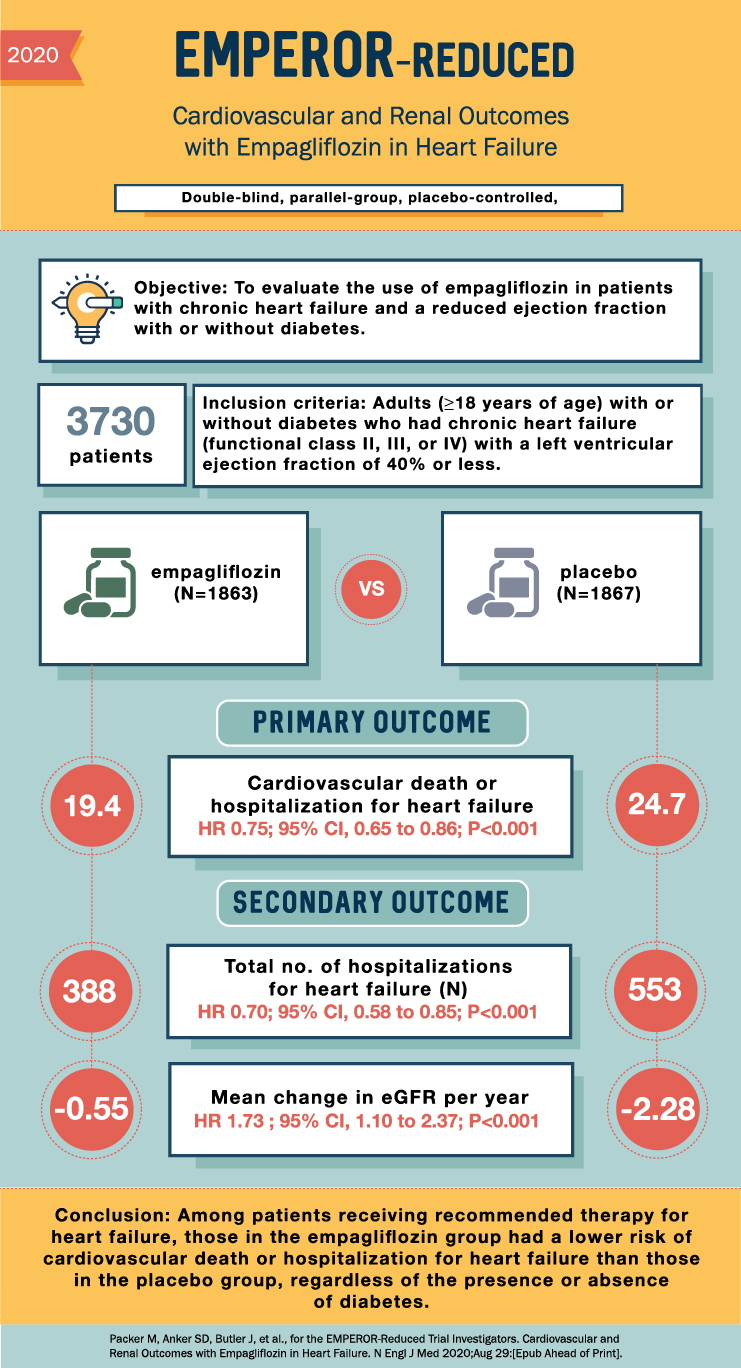
The EMPEROR-Reduced trial (2020) was a randomized, double-blind, placebo-controlled study designed to evaluate the efficacy and safety of empagliflozin in patients with heart failure and reduced ejection fraction (HFrEF), regardless of their diabetes status. The primary outcome was a composite of cardiovascular death or hospitalization for heart failure.
The results of the EMPEROR-Reduced trial demonstrated that empagliflozin significantly reduced the primary composite outcome in patients with HFrEF, irrespective of their diabetes status. This trial further reinforced the benefits of SGLT2 inhibitors in the management of heart failure patients with reduced ejection fraction and expanded their potential use across a broader range of heart failure patients.
Conclusion
Landmark clinical trials, such as EMPA-REG OUTCOME, CANVAS, DAPA-HF, EMPEROR-Preserved, DELIVER, and CHIEF-HF, have revolutionized our understanding and application of SGLT2 inhibitors in heart failure management. These trials have consistently shown the benefits of SGLT2 inhibitors in reducing hospitalization for heart failure and improving clinical outcomes in both HFrEF and HFpEF patients, regardless of their diabetes status.
As research in SGLT2 inhibitors and heart failure continues to advance, future clinical trials will likely refine our understanding of their optimal use in various patient populations and explore their potential applications in other cardiovascular and renal conditions. By building upon the knowledge gained from these landmark trials, healthcare providers can optimize heart failure management strategies and improve patient outcomes